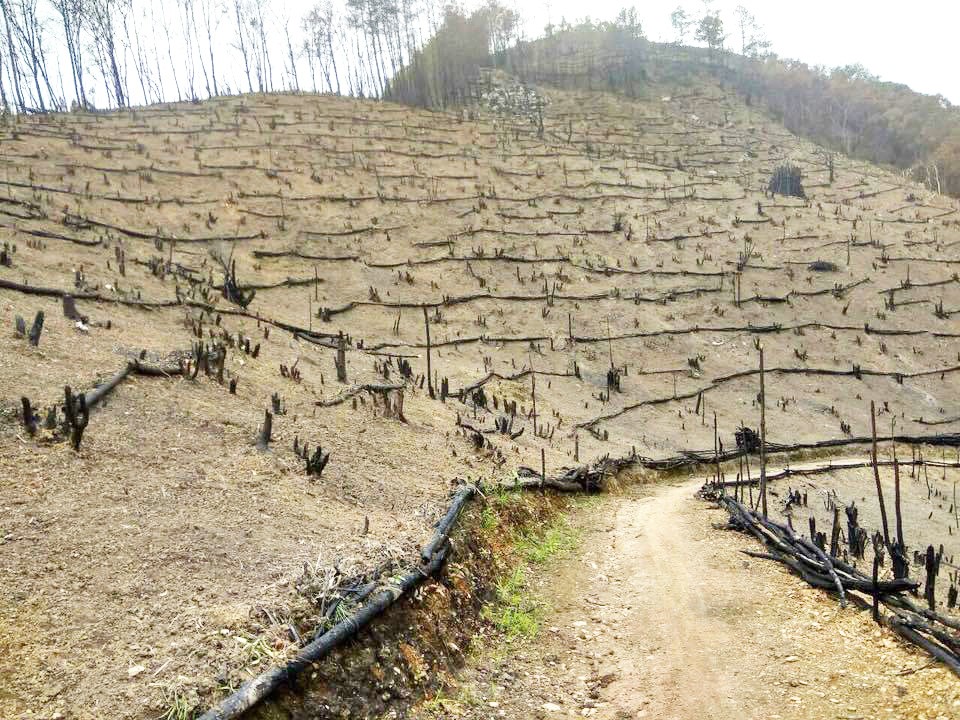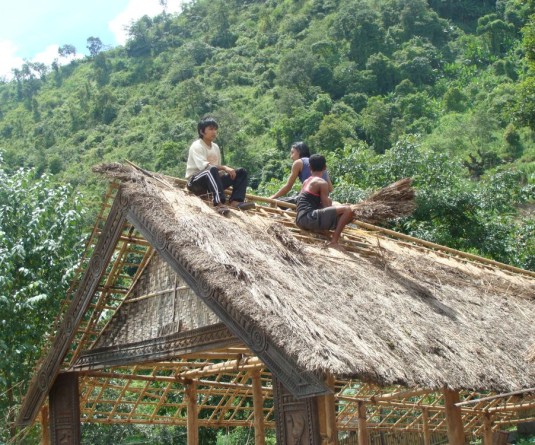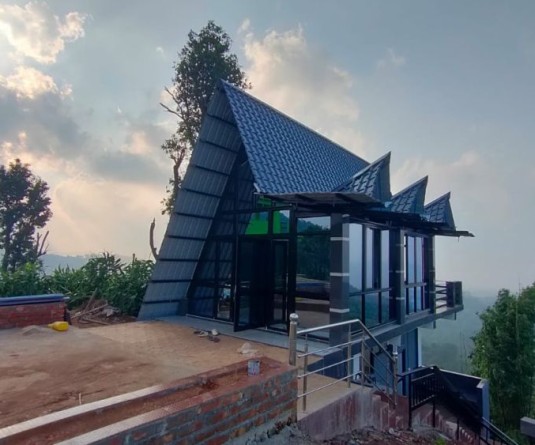This photograph captured in Mëkheotjüv village in Myanmar talks about traditional soil conservation method. Charred logs are laid across the slope so that upper layer of soil is prevented from soil erosion.

Vishü Rita Krocha
Kohima | January 16
With deep historic, cultural and spiritual ties to their land, one of the things that Naga people in Myanmar practice is Shifting Cultivation or Jhum cultivation. But Jhum has also “been misunderstood and demonized by the policymakers as destructive element to environment and climate change” in the words of Athong Makury.
In this regard, a first of its kind initiative to study Jhum from scientific perspective through a film titled, ‘Jhum in Nagaland’ was made in partnership between Resource Rights for the Indigenous People (RRtIP), Centre for Development and Environment (CDE) and University of Bern, Switzerland. While highlighting that “for the Naga people, access to basic food supplies and humanitarian relief have been impeded by increasing violent armed clashes, regularly blocking the passage of aid along river corridors that provide the only access to the region,” the film also highlights that “the Nagas are now more dependent on their customary systems for food security than any other time over the last decade.”
It further highlights the importance of protecting customary systems of indigenous peoples and the contribution these systems have to food security and livelihood protection of Myanmar’s remote indigenous peoples.
“It is an attempt to prove from both traditional and scientific perspectives that Jhum is rather a solution to all the environmental crises the planet earth is going through,” Makury said in an exclusive interview with The Morung Express.
While the film comes across as “advocacy material for recognition of Indigenous People rights, particularly for the customary land tenure of Nagas in particular and for all Indigenous people in Myanmar in general,” he said that the film shows that “Jhum is not only for humans but also for biodiversity – a multispecies world.”
“We had failed to realize and recognize that Jhum is the keystone for our ecosystems and this has been proven by the traditional knowledge system that has sustained and kept this planet earth this far, which cannot be challenged by newly introduced science built on the capitalist values,” he further maintained. “Let us not be carried away with capitalist values,” he said.
In the film, PD Dr Andreas Heinimann, Senior Research Science, Centre for Development and Environment (CDE) and Wyss Academy for Nature, stated his belief on the need to put Shifting Cultivation on the map again especially in the Naga region. According to a CDE research, he said, “there are a few hundred crops that Shifting Cultivation in the Naga regions cultivate, which gives a huge resilience not only in the centre of market but very importantly also in the sense of food security.”
Shifting Cultivation and deforesting?
The Centre for Development and Environment also looked at the last 32 years of Shifting Cultivation in the Shifting Cultivation area using Peak Satellite Data to understand whether it is really deforesting or not. “Analysing this data imagery is that Shifting Cultivation in the Naga regions in these three townships— Layshi, Lahe and Namyun are actually to the largest degree, not deforesting,” PD Dr Andreas Heinimann verified.
“The fact that Shifting Cultivation is between agriculture and forest also leads to the fact that most places in the world know formal rights of shifting cultivation land,” he pointed out. However, he also said, “We should not romanticize Shifting Cultivation as a form of livelihood and practice which should be just protected” while putting across that most communities do Shifting Cultivation.
“They also want to develop, they want to change but they want to do on their pace. They want to have the opportunity to live up to their developmental aspirations and visions. And hence, the key aspect to be able to do that is the question of recognition of customary and communal land tenure,” he underscored.
‘Customary system the backbone to self-determination’
According to Jonah, President of Tangkhul Tribe, “from our perspective as local communities, over the years from government to government both Naga people’s land tenure and our customary systems have always been neglected.”
Stating that “if we study our customary practice in depth, we will understand that the practice promotes the sustainable coexistence of humans, ecosystems and the natural environment including lakes, rivers and all living creatures,” Makury asserted that “this system is very important for basic right of indigenous people to self-determination.”
“We feel the customary system is the backbone to our self-determination. Self-determination for us means to make our own laws and rules to govern and manage our land and community,” he underlined.
Emphasizing that “we want all governments to recognise us as ethnic Naga people,” Bok Lengtsügthong, President, Makury Tribal Council articulated that, “since ancient times, we (Naga) are a tribal community with different languages.” “We Nagas are living in Myanmar and we want the government and the world to recognise us and to recognise our customary laws and our right to manage ourselves. So we request the government to support us and to accept our customary systems,” he put across.
RRtIP
The Resource Rights for the Indigenous Peoples – RRtIP was founded in 2012 as a fulfilment of the longing desire of the indigenous Naga peoples who are threatened with the violation and abuse of their rights to natural resources, culture and their existence.
RRtIP functions and operates in Nagaland with more than 100 members across the Naga inhabited areas and with the learned and experienced members in the field of indigenous affairs, anthropology, community development activities and related research activities.
RRtIP also promotes Indigenous Rights through empowering community and building capacity in order to enable them to participate in the decision making process for managing their natural resources, culture and identity.






